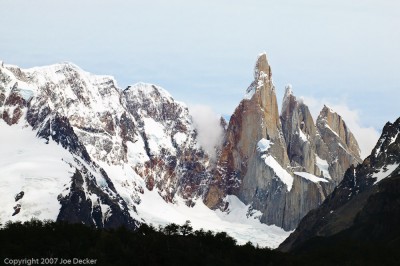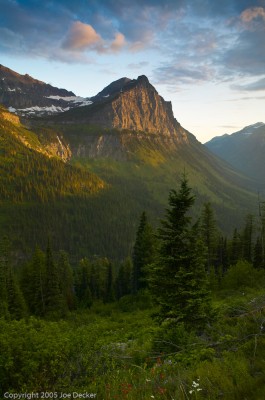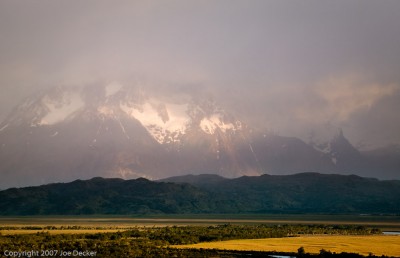
If you like this article, you can now get the book! Joe has expanded the “Tuesday Composition” series into an inspiring new ebook on composition, especially for nature photography. Check it out: The Tuesday Composition.
One of the most common challenges in landscape photography communicating the scale of large objects. Photographs seem to resist conveying the sense of scale we often feel in a landscape. When we take the photograph, we have the opportunity to move around in the landscape, to hike a half-mile and notice that our view of the mountain hasn’t changed much. Our brains unconsciously integrate that information into our perceptions of the world around us. Viewers of our still photographs see things much differently.
Small prints and web images are particularly challenging. Our minds seem to resist perceiving a mountain that stretches a mile into the air within a photograph that fits inside a lunch box. Even large prints sometimes seem to lack any real ability to communicate the size of the landscape they portray. As a result, rather than relying on making large prints, we have to understand how our brains perceive scale in still images, and take advantage of the cues our brains use in that process.

The simplest approach for communicating the scale is by comparison. It’s easy enough to fill the frame with a large mountain, but if you put a very large tree next to it, and the tree appears very tiny in the image, the mountain will seem bigger. Our brain knows the tree must be big, so the much, much larger mountain has to be enormous!
Since we want the smaller (and usually nearer) object to appear tiny, we’re trying for something very different than the near-far composition. In a near-far composition, a wide-angle perspective helps us render near objects very large. In trying to make a grand-scale photograph of a mountain, however, we want to render the “nearby” objects as small as we can, which will usually require a telephoto perspective.
Cerro Torre does just that. Here I aligned a small hill (and the trees on it) with the looming spires of Cerro Torre in the background. I shot from a distance, back along the trail, leaving the hill small in comparison to the mountains. Because the hill was shaded by clouds, the trees were silhouetted, which actually made them easier to recognize as trees. And when we can tell that those little forms are full mature trees, it’s not hard for us to feel the enormous scale of these iconic rock towers.
Another way we can establish a sense of size in a photograph is by first establishing a sense of distance, and letting our natural sense of perspective fill in the scale. Mt. Oberlin Alpenglow makes good use of this technique. The nearby trees are sharp and contrast-y, but the distant mountains are slightly muted by haze. We grasp that the mountains must be much farther away than the nearby trees, and that in turn helps us see the scale of the mountain. (The trees on the mountain itself, by appearing small, help that impression as well.)

Pink Morning Mists takes advantage of both techniques. The mists surrounding the mountain contribute to a sense that it is more distant than the hills (which is true, but perhaps not quite so much as the mists imply!), and that really imparts a sense of scale and grandeur to the mountains. But foreground ranches and hills below the mountain, again rendered small with a telephoto perspective, are also important to us “seeing” the size of the mountain in this image.
Very few things in nature photography are as disappointing as making an image of a big, glorious landscape and having the image fail to communicate that sense of immensity. Fortunately, we can often recreate some of that feeling with these simple composition techniques.
Michael Frye
12 Nov 2009Good tips Joe. There’s one more option: giving up! I gave up trying to communicate immensity long ago, because it’s just so difficult. But you’ve shown us that it can be done. To me the Mt. Oberlin photo does the best job of conveying scale, maybe because there are trees both near and far that the eye can use as a comparison.
Joe Decker
16 Nov 2009Thanks Michael! I actually mostly “give up” as well, there’s a lot more room for creativity, I believe, in the details. But sometimes I just can’t help myself. 🙂
ghuntington
19 Nov 2009Also, the snow in the distance is very telling of a large distance when compared with the summery flowers in the foreground of Mt. Oberlin Alpenglow